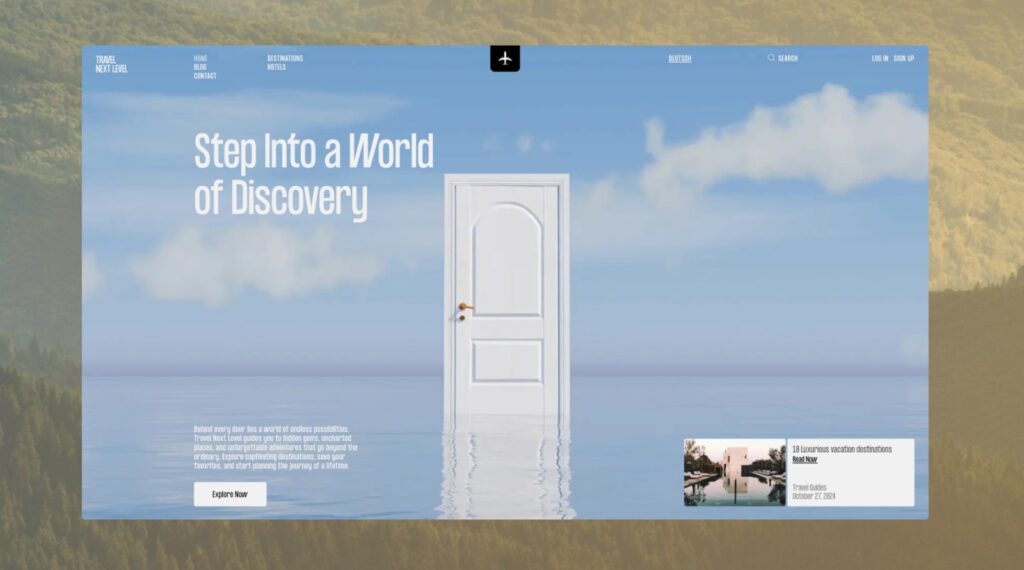Introduction: The Hackathon Spirit in Web Design
As someone who’s spent years covering tech trends, I’ve often marveled at how web design evolves—not just through innovations in tools but also through the methods teams use to create. Enter the hackathon. While the term might conjure images of frantic programmers fueled by energy drinks, hackathons have transcended their Silicon Valley roots to influence industries worldwide. At Above Bits, based in Charlotte, North Carolina, this collaborative sprint approach has seeped into their DNA. With nearly two decades of experience, they’ve perfected a holistic take on web design that balances speed, quality, and functionality.
But let’s not sugarcoat things. Not every hackathon—or its lessons—leads to perfection. There’s a fine line between rapid development and rushed results, and finding that balance is the secret sauce for creating effective web design in Charlotte.
The Hackathon Phenomenon: A Global Movement
Hackathons, originally conceived as coding marathons for tech enthusiasts, have grown into global phenomena. In 2022 alone, over 5,000 hackathons were hosted worldwide, bringing together designers, developers, and strategists to solve problems quickly. Large corporations like Facebook and Google often use internal hackathons to generate ideas for products like Facebook Messenger or Google Maps features.
Why Hackathons Work for Web Design
The beauty of hackathons lies in their constraints. Limited time forces participants to strip away unnecessary fluff and focus on the essentials. This mindset can be a game-changer for web design, where overthinking often leads to delays. Teams at Above Bits adopt a similar approach for clients in Charlotte, streamlining design decisions without compromising quality.
Tools of the Trade: The Technology Driving Rapid Web Design
If you haven’t used Figma, you’re missing out on one of the past decade’s most revolutionary web design tools. Figma’s collaborative environment allows teams to design, prototype, and gather feedback—all in real time. Statistics show that 77% of design professionals globally prefer Figma over older tools like Adobe XD or Sketch.
At Above Bits, they swear by Figma for web design in Charlotte. It’s advantageous during collaborative sprints, ensuring every stakeholder’s voice is heard without endless back-and-forth emails. However, there’s a catch—Figma’s dependency on cloud servers can frustrate teams in areas with unreliable internet, making offline work tricky.
Three.js and the 3D Web Boom
Another exciting tool making waves in web design is Three.js, a JavaScript library for creating 3D experiences. Websites like IKEA’s 3D furniture preview and even Nike’s interactive shoe configurators showcase what’s possible with this technology. While visually stunning, these features come at a cost—slow load times on older devices or low-speed internet.
Above Bits has embraced tools like Three.js for niche projects in Charlotte, particularly when creating immersive e-commerce experiences. However, they’re cautious, ensuring 3D elements don’t overshadow usability.
Balancing Speed and Quality: The Challenges
Speed is a double-edged sword in web design. On the one hand, rapid prototyping during hackathons or sprints often leads to quick wins. Conversely, the rush to meet deadlines can result in technical debt—sloppy code that creates long-term issues. Globally, studies suggest that 61% of developers working in fast-paced environments face burnout, impacting overall quality.
Above Bits addresses this by maintaining a robust review process. Even during time-sensitive projects, their designers and developers in Charlotte take an extra moment to validate every feature, ensuring clients receive polished results.
The Human Element: Communication Breakdown
Another challenge lies in communication. While hackathons and sprints foster collaboration, misaligned expectations or unclear goals can derail projects. For example, a famous hackathon in 2021 led to the creation of a highly innovative travel app—only for the team to realize afterward that no one considered GDPR compliance.
Above Bits avoids these pitfalls by adopting a transparent process for web design in Charlotte, keeping clients involved every step of the way. Still, even the best teams occasionally stumble when juggling competing priorities.
Holistic Design: Beyond the Aesthetics
Holistic design goes beyond making things look pretty; it’s about creating functional, user-centric experiences. This approach considers every aspect, from the visual hierarchy and color palette to how fast the site loads on mobile in a Charlotte coffee shop with spotty Wi-Fi.
Above Bits excels in holistic design by integrating both creative and technical perspectives. For instance, during a recent project for a Charlotte-based non-profit, their team balanced engaging visuals with accessibility features, ensuring the site worked seamlessly for visually impaired users.
The Downsides of Following Trends Blindly
Take parallax scrolling, a trend where background content moves slower than foreground content to create depth. While it looks cool, overusing it can lead to higher bounce rates because of long load times. In 2023, Google reported that 53% of mobile users abandon a site if it takes longer than three seconds to load—a sobering statistic for trend-chasers.
Above Bits takes a cautious approach to trends, focusing on timeless design principles. If a client in Charlotte insists on parallax scrolling, they implement it sparingly to avoid impacting performance.
Lessons from Rapid Web Design
- Start Small, Think Big: Break down complex projects into manageable chunks to ensure progress without overwhelming them.
- Focus on Usability: Design isn’t just about aesthetics; it’s about functionality and user satisfaction.
- Embrace Feedback: No matter how experienced your team is, external perspectives can reveal blind spots.
- Test Early, Test Often: Catching issues during prototyping saves headaches (and budgets) later.
- Don’t Overcommit: Set realistic timelines to maintain quality, even for rapid projects.
Deep Dive into Case Studies and Tools
Let’s take a closer look at how Above Bits applied hackathon-inspired strategies for a non-profit organization based in Charlotte. The client needed a website that was accessible, visually engaging, and could handle high traffic during annual fundraising events.
Using their rapid development approach, the team at Above Bits broke the project into three focused sprints:
- Sprint One: Prioritized UX design, ensuring intuitive navigation and meeting accessibility standards.
- Sprint Two: Integrated a custom donation system that worked seamlessly across devices.
- Sprint Three: Conducted stress testing to prepare the site for high-traffic peaks.
The result? A 30% increase in donation conversions compared to the previous year. The non-profit’s director even called the site “a game-changer for our mission.”
Lessons from the Case Study
While the outcome was a success, it highlighted some challenges. Compressing development into sprints can lead to overlooked details. For instance, during the stress test, an issue with caching emerged that required additional debugging. This is where Above Bits’ nearly two decades of experience in web design in Charlotte shone—quick fixes were implemented without derailing the project.

Advanced Tools That Shape Modern Web Design
Webflow has gained immense popularity for empowering designers to create professional websites without touching a single line of code. It’s especially valuable during hackathon-style sprints where speed is essential. In 2023, Webflow reported a 300% increase in users from small businesses, a testament to its ease of use.
However, no-code platforms have their limits. While Webflow is excellent for rapid prototyping, it can be restrictive for developers looking to implement custom features. At Above Bits, the team sometimes uses Webflow for initial mockups but transitions to more robust tools like Laravel or Vue.js for complex functionalities.
AI in Web Design: Promise and Pitfalls
Artificial intelligence tools like ChatGPT and Adobe Firefly are becoming indispensable in modern web design. AI can automate mundane tasks such as generating placeholder text or suggesting layouts. Globally, 65% of design agencies reported using AI in some capacity by 2024.
Above Bits uses AI tools to speed up the creative process, but they also understand the limitations. For example, while AI-generated designs can be helpful, they often lack a nuanced understanding of a brand’s personality, which is critical for clients in Charlotte looking for customized solutions.
The Future of Web Design: Speed vs. Quality
As we move into 2025, personalization is becoming a cornerstone of web design. Users now expect websites to remember their preferences and adapt accordingly. However, achieving this level of personalization requires significant backend development, which can be time-consuming and costly.
Above Bits strikes a balance by integrating scalable personalization features into their projects. For example, they recently developed a local e-commerce platform in Charlotte that customizes product recommendations based on user behavior.
The Risks of Over-Automation
Automation tools are a blessing, but over-reliance can backfire. For instance, websites that rely heavily on chatbots sometimes alienate users who prefer human interaction. A recent survey showed that 41% of users abandon a site when faced with unhelpful AI-driven customer support.
At Above Bits, automation is seen as a supplement, not a replacement. They ensure that features like chatbots or AI-driven navigation are backed by human support options, maintaining a balance that users appreciate.
Above Bits: Almost Two Decades of Expertise
What sets Above Bits apart is their ability to adapt. Since their founding nearly 20 years ago, they’ve navigated countless shifts in technology, from the rise of mobile-first design to the emergence of voice interfaces. They’ve worked with platforms as varied as Zen-Cart and Shopify, proving their versatility in delivering effective web design in Charlotte and beyond.
Affordable Quality
One of the most impressive things about Above Bits is their commitment to affordability. In an industry often criticized for overpricing, they manage to deliver high-quality solutions without the premium price tag. This has made them a go-to choice for small businesses in Charlotte looking to modernize their web presence without breaking the bank.
The Challenges Ahead: Staying Relevant in a Rapidly Evolving Industry
The pace of innovation is both exciting and daunting. With technologies like quantum computing on the horizon, the tools and methods we use today could become obsolete in the next decade. Above Bits is already exploring emerging technologies to stay ahead of the curve.
Competing in a Crowded Market
The web design industry is more competitive than ever. With DIY platforms like Wix and Squarespace offering increasingly sophisticated features, professional design agencies must prove their value. Above Bits does this by focusing on the unique needs of their Charlotte clients, offering tailor-made solutions that generic platforms can’t match.
Transform Your Web Design Vision with Above Bits
If you’re in Charlotte or anywhere else in North Carolina and looking for a team that combines speed, quality, and nearly two decades of expertise, Above Bits is the answer. Whether you’re modernizing an old site or building something entirely new, their holistic approach to web design ensures results that exceed expectations.
Don’t settle for cookie-cutter solutions. Visit Above Bits today and discover how they can bring your vision to life with innovative tools, creative strategies, and a rare personal touch in the industry.

